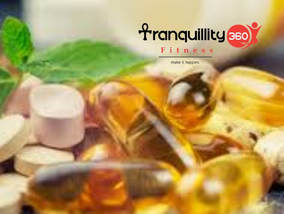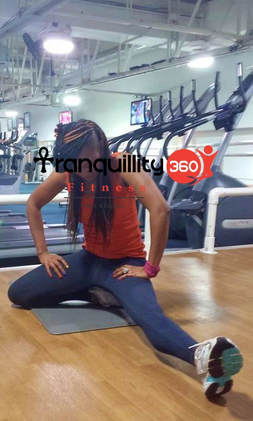 Exercise has multiple short-term and long-term effects on your cardiovascular system. Your cardiovascular system is also called the circulatory system. It is made up of your heart, arteries, your veins and capillaries. The primary role of your cardiovascular system is to circulate oxygen-rich and glucose-rich blood to your cells and to remove cellular waste products such as carbon dioxide from the muscles. Heart Short-term aerobic exercise such as running for 30 minutes will not increase the size of your heart muscle, nor will it thicken the walls of your heart. However, long-term aerobic exercise will increase the size and thickness of your heart, especially during moderately to vigorously intense exercise. These changes are reversible when you discontinue aerobic training. Blood Vessels When you take one aerobics class, the blood vessels going to your working skeletal muscles increase in size, or dilate so more blood can flow to these muscles. Long-term aerobic exercise improves the elasticity of your blood vessels, or the ability of your vessels to expand and contract. The improved elasticity delivers more oxygen and glucose to your muscles at a faster rate. The number of capillaries in your working muscles also increases as an adaptation to long-term aerobic exercise. Blood Volume The amount of blood circulating in your body increases within 24 hours after your first exercise session. According to William McArdle and colleagues in the book, "Exercise Physiology Energy, Nutrition & Human Performance," the long-term effect of aerobic exercise is an approximately 20 percent increase in blood volume. An increase in blood volume means your body can deliver more oxygen to your working muscles. Your body will also be able to better regulate your body temperature during exercise. Cardiac Output Cardiac output is the amount of blood your heart pumps out in one minute. It is regulated by the amount of blood your heart pumps out in one contraction, or stroke volume, and the number of times your heart beats in one minute, or your heart rate. Cardiac output increases as a short-term and a long-term effect of regular aerobic exercise. Initially, cardiac output increases due to an increase in your heart rate. Then, as your aerobic fitness improves, cardiac output increases due to an increase in stroke volume and a decrease in heart rate. Blood Pressure Your systolic pressure is the pressure against your artery walls when your heart contracts. Diastolic pressure is the pressure against your artery walls when your heart relaxes. When you first start to aerobic exercise, your blood pressure increases as your cardiovascular system works to deliver more oxygen and glucose to your working muscles. A long-term adaptation to aerobic exercise is a decrease in both your systolic and diastolic blood pressures during rest and during sub-maximal exercise. The American College of Sports Medicine encourages regular aerobic exercise as a method of controlling and reducing high blood pressure due to its effects on lowering your blood pressure. Basic Cardiovascular Exercise You Can Do at Home
2 Comments
 If you speak to any fitness professional today, regarding weightless or muscle gains, one of the first thing they will let you know is that your meal plan is one of the most essential piece of the puzzle towards your fitness goal. I mean each and every last one of them will tell you that one of the most important key to your success is having a meal plan. It is one of the easiest things you can do to make your life healthier and better in general, but is one of the first things we neglect when life gets busy and this why they are so much fast food and pop up restaurant every you go today. One prime example I can give to you from a personal experience, I work in central London, and no matter what time of the day am travelling on the train I can see people just stuffing down fast food; burgers, fries’ sodas and energy drinks. All which damages your hard work gym, why people do this because its quick easy and available, thing about if you do your own meal prep and bring your own food with you, the benefits you will gain. The Advantage of meal prep If one should look at advantages of meal planning, you could easily go down a rabbit hole, as there is no ending. Planning meals helps you manage your time better and makes meal preparation easier and keep your fitness game on point. It can turn a hectic week into one that is nearly stress-free. It also helps you improve your own personal health. Meal planning is so important, fitness experts and those preparing for fitness competitions consider it a must, there is no order way of life. They not only plan their meals down to the ounce, they spend better part of at least one day each week prepping those meals. TIPS FOR MEAL PREP
Keep in mind that the first time that you sit down and plan meals to lose weight/build muscle the process will take a little longer. But once you have your system in place, you'll breeze through the ritual you might even start to enjoy it. Getting organized feels good and reaching your weight loss goals feels even better. So take the prep steps to stay on track.  Its no secret that supplements are key components to achieving a healthy lifestyle and better body composition. The body crave all necessary nutritional needs it for goals such as muscle gains, weight loss or even mental focus, which can be difficult to be obtain from just food intake. Although there are many supplements you can take that will support your goals, it is important to have a daily plan of essentials to take in which you can continue on a long-term basis, as some supplements are not meant to be taking on a long term basis. Three basic food supplements you should try to consume on a daily basis are: 1. Omega 3 Capsules Omega 3 fatty acids are known as healthy fats which help with cognitive function, joint and bone health. It is also found to have other huge health benefits such as decreasing risk of certain cancers and diabetes. 2. Daily Vitamins (Multivitamins) Vitamins such as B vitamins, thiamine, Zinc, Magnesium, vitamins A and E are all key nutrients that can be taken together with a good quality multivitamin. They all play huge parts in helping maintain normal energy levels and daily defence against illness. 3. Meal Replacement (Protein Powder) Tight restrictions and regulations on the food industry, as causes the food we consume goes through a very high processing procedure weather it is by pesticide or heavily fortified with additives, these process not just affect the quality of the food but also affect the nutritional values. Therefore, when certain foods are consumed you don’t get the full benefits or the full number of nutrients required. IE most human body only ever digest and used 18g of protein at any giving time, consuming less or more protein is really damaging to the human body. Its recommended that one consume at least one serving of good quality protein supplement per day to help the body meets that daily healthy quota.  According to science and case studies, short periods of intense exercise can be just as effective or more than longer workouts that you do with moderate effort. Over the years it as been proven that high-intensity circuit training that you do using only your bodyweight challenges your cardiovascular fitness and gives you a wicked, full-body workout if done correctly. Tranquillity 360 Fitness qualified personal trainer Jahseen Foster, as break down and design eight high-intensity bodyweight-only workouts that you can do anywhere, weather in your home or your hotel room. These workouts are made for the persons who wants to get fitter and healthier, and feel great but don’t have time for the gym or feels comfortable working out in private. Each exercise focuses on one of three goals: cardiovascular fitness, power and strength, and endurance and fat burning. Things to know before starting workout:
Spider Lunge (2 minutes’ repeat 2 times)
Squats (12 reps’ repeat 2 times)
Plank (10 reps’ x15 seconds)
Stretches
(b) Breathe in, then, in one motion, exhale as you straighten your right leg. Slowly return to the lunge position. Repeat four times. Switch sides.
(B) Breathe out as you bend your upper body to the right. Take five slow breaths. Slowly return to the centre. Repeat on the left side. |
AuthorsThis blog is updated by Tranquillity 360 fitness personal trainers, as well as other guest bloggers. Archives
July 2021
Categories |

 RSS Feed
RSS Feed